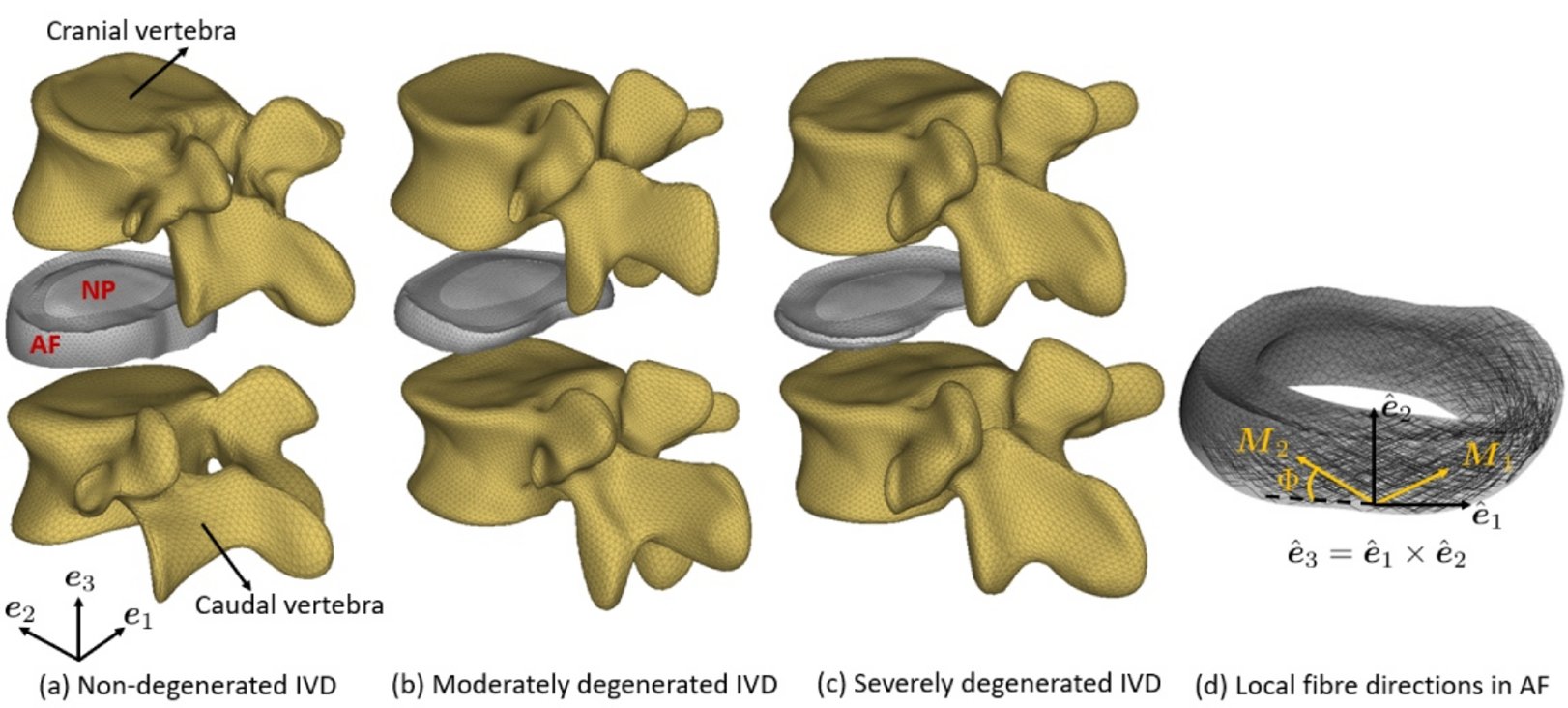Finite Element Framework for Degenerative Intervertebral Discs
The goal of this project is to develop a robust, cost-efficient, and reliable Finite Element (FE) framework to study the mechanical behavior of intervertebral discs in various stages of degradation when subjected to mechanical loads.
The soft collagenous intervertebral discs comprising of ‘structured’ outer annulus fibrosus and gel-like inner nucleus pulposus provide the necessary flexibility and cushioning between spinal vertebrae. However, with they undergo gradual deterioration due with age, loading conditions and pathological issues (Figure 1). Physiology based FE models are increasingly utilized to study the mechanical behavior of these intervertebral discs for patient specific studies and medical applications. However, the complexity in the physiological geometry and types of loading conditions (both static and dynamic) poses special challenges in identifying suitable FE based discretization and analysis approaches.

Figure 1: Various states of intervertebral disc degeneration.
The development of a suitable FE-based model comprises the following steps:
- Generation of 3D volumes of the spinal segments based on physiological information and statistical models (Figure 2).
- Numerical simulation of the load cases flexion/extension, lateral bending, and axial rotation using the proposed choice of discretization (i.e., tetrahedral elements) and explicit solution method.
- Comparison of the results with those obtained using the commonly used discretization and analysis approach as well as with multi-axis experimental data.

Figure 2: Generation of patient-specific 3D virtual volumes.
